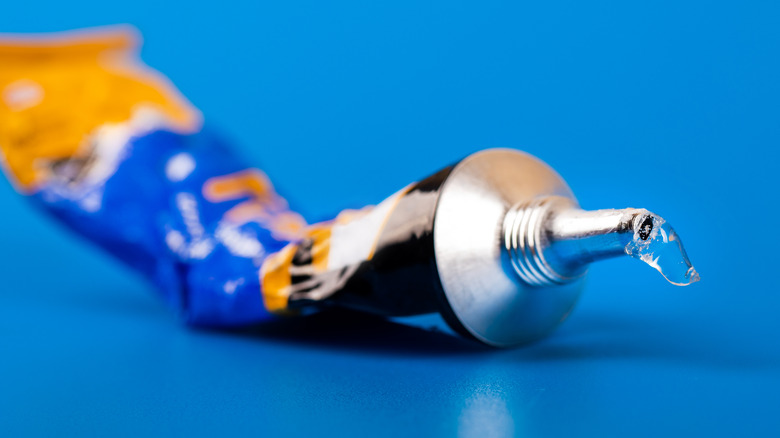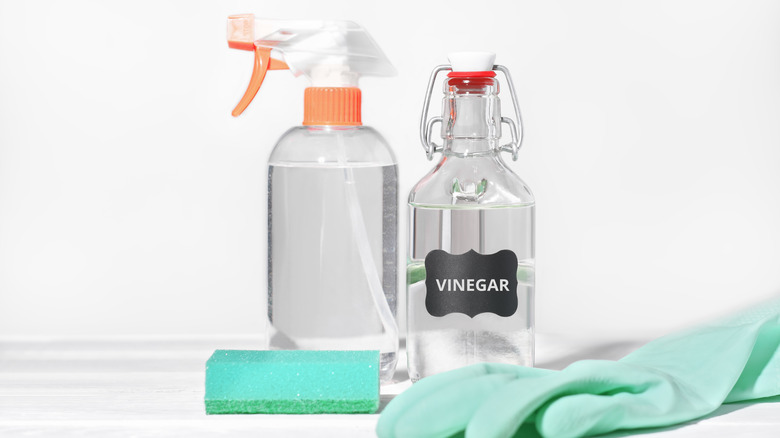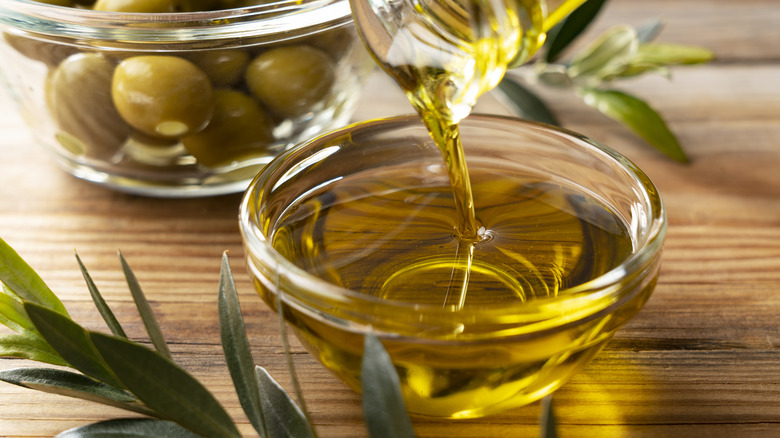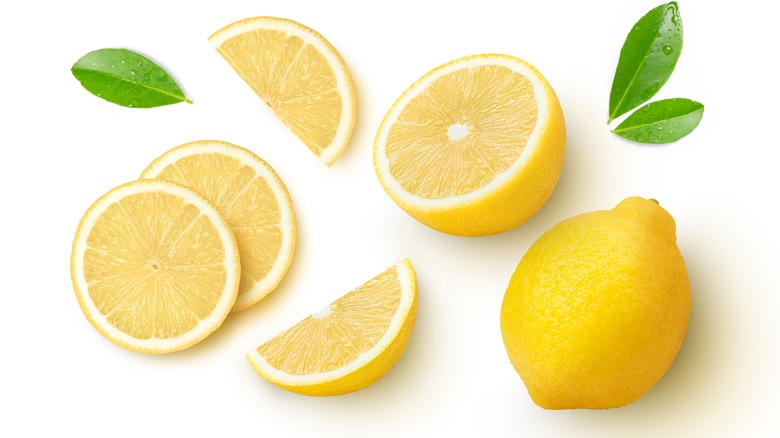3 Non-Conventional Household Items To Remove Superglue
Whether you're trying to remove superglue from your fingertips or the dining table, it is not an envious task. It may be your first instinct to quickly rip it off, however, this will only further damage your furniture or remove layers of your skin. And many of the traditional glue removal solutions like acetone, rubbing alcohol, and WD-40, are extremely harsh. Not only are they chemically severe but they can also damage skin, furniture, carpet, and fabric. For instance, acetone can discolor carpets and fabric, and isopropyl alcohol can dry and crack skin. So it makes sense to look for alternatives out there that carry a little less risk with them.
Some superglue removal solution alternatives include baking soda, dish soap, and vinegar. But if you don't have those on hand, or just want to try out a different method, there are plenty of other choices that you probably already have in your cupboards. Though they may be non-conventional, we've found 3 excellent alternatives for removing superglue from almost any surface — here's how to use them the next time you need to clean up superglue residue.
When to opt for vinegar
One of the most popular home cleaning remedies is white distilled vinegar, and it can be a great choice for superglue removal as well. In addition to being an affordable, more natural chemical, it also has a pH level of 2-3, says Medicine Net. Before becoming an acetic acid through a fermentation process, vinegar actually starts out as ethanol alcohol, so it makes sense that vinegar is handy for sticky glue removal.
Vinegar is the best choice for cleaning glue from non-porous surfaces like metal, plastic, and glass, as it can seep into porous materials, potentially damaging them along the way. But if you get excess glue on, say, a ceramic cup after reattaching a handle, vinegar is the right call. For a foaming reaction, you can add baking soda to the vinegar when it's applied; otherwise, use coarse Kosher salt as a non-foaming abrasive. Another easy method includes simply soaking a cotton ball in white vinegar and using it to coat the effected area. After a few minutes have passed, you should easily be able to peel the glue off with a thin tool, such as a credit card.
The oily solution
Another key agent for breaking down superglue residue is oil. Oil contains fat that helps loosen the cyanoacrylate bond, according to Dr. John Anthony in a conversation with the Cleveland Clinic. So look for some food-grade grease to help you get rid of hardened superglue. Mayonnaise, olive or vegetable oil, and even peanut butter can be great carriers of oil — be sure to use the chunky stuff for extra grit while scrubbing.
Since these are food items, they are especially helpful against glue residue on the skin. However, because the oil is physically and not chemically breaking down the glue, this method will take a while. Spend some time lightly massaging the oily substance on the affected skin, and rinse with soap and warm water as you go. If you want a skin-safe abrasive, just mix a little baking soda in with your oil of choice. If you'd prefer to avoid applying food substances onto your skin, Dr. Anthony also says you could try using hand lotion, petroleum jelly, or mineral oil. However, be sure to lightly tug the glue off after massaging to avoid further injury.
Glue removal with a twist
As annoying as superglue being stuck to your favorite shirt is, so are grease stains! So leave the oil-based glue removers for skin or non-porous materials. Instead, if you find yourself with glue on your clothes, carpet, or upholstery, you'll want something lightly abrasive but that won't get soaked into the fabric, as that can lead to mold and bacteria. Additionally, when it comes to furniture or carpet, do not reach for vinegar, though it is a powerful home cleaning remedy for all myriad of issues, it also has a pungent smell, and if applied too liberally, will leave your house smelling like a pickle jar.
Instead, turn to the fruit bowl and grab a lemon. Lemons have roughly 5 grams of citric acid per 1/2 cup of juice. Citric acid is, as you may have guessed, an acid that can help break down the sticky compounds found in glue. Juice a lemon into a bowl, and with a soft toothbrush, gently scrub the superglue stain with the lemon juice until it is gone. For additional scrubbing power, mix in some coarse Kosher salt. After, rinse the fabric with water and a bit of dish soap to avoid staining.



